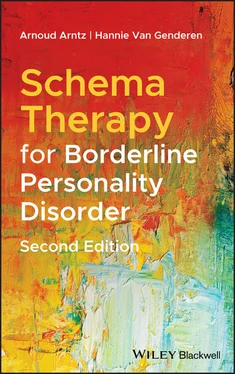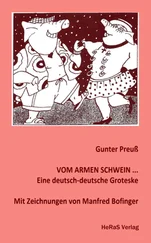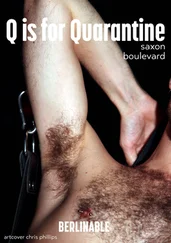Hannie van Genderen - Schema Therapy for Borderline Personality Disorder
Здесь есть возможность читать онлайн «Hannie van Genderen - Schema Therapy for Borderline Personality Disorder» — ознакомительный отрывок электронной книги совершенно бесплатно, а после прочтения отрывка купить полную версию. В некоторых случаях можно слушать аудио, скачать через торрент в формате fb2 и присутствует краткое содержание. Жанр: unrecognised, на английском языке. Описание произведения, (предисловие) а так же отзывы посетителей доступны на портале библиотеки ЛибКат.
- Название:Schema Therapy for Borderline Personality Disorder
- Автор:
- Жанр:
- Год:неизвестен
- ISBN:нет данных
- Рейтинг книги:3 / 5. Голосов: 1
-
Избранное:Добавить в избранное
- Отзывы:
-
Ваша оценка:
- 60
- 1
- 2
- 3
- 4
- 5
Schema Therapy for Borderline Personality Disorder: краткое содержание, описание и аннотация
Предлагаем к чтению аннотацию, описание, краткое содержание или предисловие (зависит от того, что написал сам автор книги «Schema Therapy for Borderline Personality Disorder»). Если вы не нашли необходимую информацию о книге — напишите в комментариях, мы постараемся отыскать её.
Shema Therapy for Borderline Personality Disorder
Schema Therapy for Borderline Personality Disorder
Schema Therapy for Borderline Personality Disorder — читать онлайн ознакомительный отрывок
Ниже представлен текст книги, разбитый по страницам. Система сохранения места последней прочитанной страницы, позволяет с удобством читать онлайн бесплатно книгу «Schema Therapy for Borderline Personality Disorder», без необходимости каждый раз заново искать на чём Вы остановились. Поставьте закладку, и сможете в любой момент перейти на страницу, на которой закончили чтение.
Интервал:
Закладка:
The patient is very angry
The patient acts impulsively
The patient speaks in a louder voice and sometimes makes aggressive gestures
The patient is angry about everything and everybody
The patient doesn't listen to reasonable arguments
The outburst of rage is often unexpected
The outburst of rage can lead to physically damaging people
The therapist can empathize with the patient when he sees the wrong that caused the anger
The tone of voice is of a little angry child (harsh and screaming voice)
The punitive parent
The mode of the punitive parent usually also gets a name. When it is very clear which parent represents the punitive parent for the patient this mode can be given a name such as “your punitive mother [father]”or Mrs. or Mr. Johnson (which is the family name of the patient). Sometimes the patient may be unwilling or unable to actually give a name to the punitive parent out of a sense of (misplaced) loyalty toward that parent. When this is the case, the patient can refer to her “punitive side” or “the punisher.”
The punitive parent is taunting in her manner and has a tone of disapproval and humiliation (See ST step by step 5.20). She thinks that Nora is bad and deserves to be punished. The punitive parent states that Nora is showing off. When Nora fails, it is simply because she has not tried hard enough. Feelings are of little interest to the punitive parent and, according to this side, she uses them only to manipulate others. Should something go wrong, it is her own fault. In her mind, succeeding is dependent entirely upon her desire to succeed. If she really wants something, it will work out. If she fails or it does not work out, she obviously did not want it enough. Many BPD patients, perhaps even more than 50%, experience this mode as a voice, not (only) as thoughts. Often the voice is an echo of the caregiver that punished the child. Because there is usually no source misattribution (the patient is aware that it is her own mind producing the voice) we don't treat such a punitive voice as a form of psychosis. But according to some definitions, it can be considered a psychotic symptom. Because patients are often afraid of being considered “crazy” they are reluctant to tell therapists that they hear a voice when the punitive mode is activated. Therapists can therefore gently check how this mode is experienced, by explaining that many BPD patients experience this mode as a voice, others as thoughts, and many in both forms. As said, the way the mode is experienced has no direct treatment implications and therapists should not panic or start antipsychotic medication if their patients experience the messages of the punitive parent mode as a voice.
Sample dialogue with a patient in the punitive parent mode
T:
How are you doing?
P:
(in an angry voice) Bad.
T:
Why is that, did something bad happen?
P:
No, I did something stupid and now everything is ruined.
T:
So, things are not going well with you?
P:
No, I'm hopeless and now I'm bothering you as well.
When the punitive parent is present, Little Nora cowers away and is difficult to reach.
While in this mode, the patient will punish herself by purposely denying herself enjoyable things or by ruining them. She will also punish herself by hurting herself or attempting to end her life. She provokes punishment everywhere, even from her therapist. She refuses to aid in her own recovery by spurning activities that would promote healthy improvement. This often results in a premature end to the therapy.
When the patient is in this mode, the objective of the therapy involves extinguishing the unhealthy rules and behaviors and replacing them with more adequate rules and norms.
How to recognize the punitive parent during a session
The patient talks about herself in a very negative way
The aggression is directed at herself
The content of the messages is black and white
The patient seems not to hear what the therapist says
The patient repeats the negative message over and over again
The tone of voice in which the patient talks with the therapist is harsh, but not loud (like an adult voice)
The patients feel shame or guilt
The patient's self‐talk is characterized by words like “stupid,” “foolish,” “dumb,” and so on
The patient engages in counterfactual thinking, as if she knew beforehand how things would end
The patient attributes negative experiences as if she intended them and does not show understanding of the concept of bad luck. Thus, she seems to live in a world where everything happens intentionally, with the source of the bad intentions being her.
The healthy adult
It may seem odd to have a “healthy adult” mode when dealing with BPD, but it is exactly this mode that the patient needs to cultivate and eventually let dominate. Due to absence of a normal, healthy childhood, as well as due to uncontrollable events during this period, the healthy adult mode is seldom strongly present during the initial stages of the therapy. Research shows that BPD patients are on average characterized by very weak presence of this mode.
The patient's lack of healthy development in areas such as bonding with others, autonomy, self‐expression, self‐value, misfortune, emotions and emotional needs, and the lack of experience in dealing with realistic limitations, requires the therapist to serve as a representative of the “healthy side” particularly in the beginning of the therapy.
However, it is the healthy adult who initially ensures that the patient seeks out and remains in therapy. At later stages of therapy this mode helps the patient to achieve healthy goals. These therapeutic goals such as relationships with others, looking for educational or work opportunities, and other such activities that the patient will enjoy and be capable of completing, are necessary for successful completion of the therapeutic process. While in this mode the patient not only dares to show her feelings, but also shows she is capable of controlling their expression, a necessary skill for the BPD patient to accomplish (See ST step by step5.23).
As previously stated, in the beginning of the therapy, it is the therapist who serves as a representative of the so‐called healthy side. By the end of the therapy, the healthy adult is so evolved that she can take this role over from the therapist and the therapy can be concluded in a healthy, appropriate manner.
How to recognize the healthy adult during a session
The patient can see an issue from different perspectives
The patient asks for help in an adequate way
The patient is able to express anger in a controlled way
The patient shows adequate assertiveness
The patient understands other people have different views and needs than hers and can deal with that
The patient is able to enjoy pleasant activities
The tone of voice is modulating with the feelings
The happy child
The Happy Child mode, or Happy Nora, is very weak in the beginning of therapy, because this part was always criticized or even forbidden by the punitive parent mode. Self‐expression was always suppressed and punished.
Happy Nora feels happy, relaxed, accepted, loved, and playful. She is satisfied with her life (See ST step by step 5.06).
She believes that she can trust other people and feels attached to them. She thinks that the serious things in life, like work and housekeeping, must alternate with relaxing and doing things you like.
When in this mode she does things that are funny and pleasant, like playing with friends or children, visiting theme parks, or going to the cinema. She is curious to experience new things.
Читать дальшеИнтервал:
Закладка:
Похожие книги на «Schema Therapy for Borderline Personality Disorder»
Представляем Вашему вниманию похожие книги на «Schema Therapy for Borderline Personality Disorder» списком для выбора. Мы отобрали схожую по названию и смыслу литературу в надежде предоставить читателям больше вариантов отыскать новые, интересные, ещё непрочитанные произведения.
Обсуждение, отзывы о книге «Schema Therapy for Borderline Personality Disorder» и просто собственные мнения читателей. Оставьте ваши комментарии, напишите, что Вы думаете о произведении, его смысле или главных героях. Укажите что конкретно понравилось, а что нет, и почему Вы так считаете.












